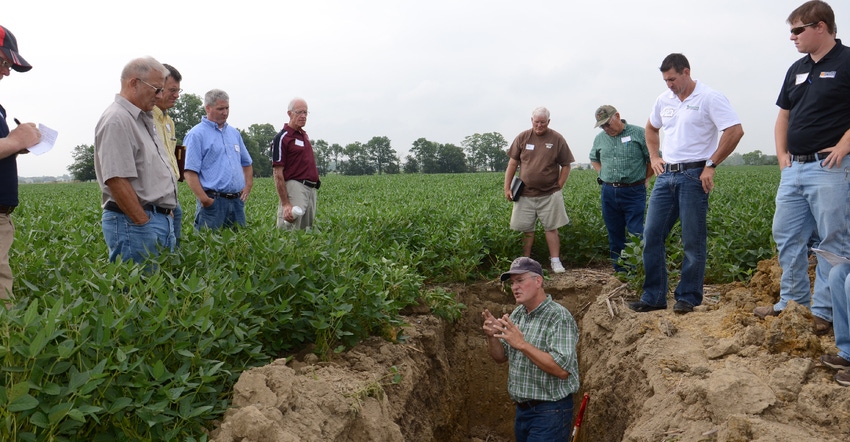January 12, 2021

Why is soil compaction such a concern in 2021? One major factor is current trends in ag equipment. Tractors, grain carts and combines are big and getting bigger.
A combine with a full grain tank can weigh close to 63,000 pounds. A 1,000-bushel grain cart with a four-wheel-drive tractor loaded with grain weighs close to 100,000 pounds. This huge equipment creates concern for controlling soil compaction. While many advancements have been made in tire type, tread, proper tire pressure and even tracks, soil compaction is a real problem with heavy equipment.
If soil compaction occurs even within the first 8 inches of the soil profile, it will negatively impact crops. With compacted soils, water is slower getting to tile drains. This can cause ponding at the surface or increased runoff that might transport both eroded soil and valuable nutrients. Ponded soil can also cause surface crusting that may be detrimental to proper crop emergence. Soil compaction decreases a soil’s water-holding capacity. Water that makes it into the soil profile is not able to be retained for periods of dry weather.
A compacted soil is not a healthy soil. The soil microbiology is stressed both by the reduced pore space and available airflow. Unhealthy soils have less nutrient availability, and cycling of soil-available nutrients is reduced. All these factors together lead to a stressed plant, creating lower yields and less probability.
Minimize soil compaction effects
How can you reduce the effects of soil compaction? One possible way is using controlled traffic. Controlled traffic means minimizing the footprint of each pass across the field. The planter, sprayer, combine and grain cart all use the same tire tracks. According to studies conducted by Ohio State University, 85% of compaction occurs on the first pass. If you can stay on the same tracks every time, that will help limit the impact of big equipment to a smaller percentage of the field. Depending on the size of the equipment and pattern used to control traffic, up to 80% of the field can be avoided.
Maybe controlled traffic is not an option, or you want to address the 20% to 30% of soil affected while using controlled traffic. Cover crops can be very successful in battling challenges with soil compaction. In a traditional corn-and-soybean rotation, crops are only actively growing for about five or six months. If you incorporate a cover crop or multiple species of cover crops, you can keep the soil active for most of the year. Rather than the commodity crop fighting soil compaction for water and nutrients, cover crops are doing it over the winter.
Many species of cover crops are more suited to dealing with restricted areas in the soil. Root channels create paths for corn and soybean roots to penetrate the compacted layer. With overwintering species, they can grow through compaction layers when they’re softer over winter.
Different cover crop recipes can be created based on the level and depth of soil compaction. If you have issues with soil compaction and are interested in controlled traffic or a cover crop recipe, contact your local USDA Service Center.
Harrison is a district conservationist with the Natural Resources Conservation Service. He writes on behalf of the Indiana Conservation Partnership.
You May Also Like




